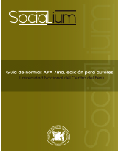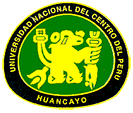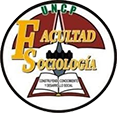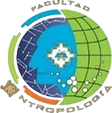Presidentialism and Peruvian politics
DOI:
https://doi.org/10.26490/uncp.sl.2019.3.2.517Keywords:
presidentialism, parliamentarism, politics, archaism, authoritarianism, democracy, republicAbstract
This document, the result of a research on presidentialism and Peruvian politics, proposes that at the apex of our politics, authoritarian archaisms of various signs and sequels are reproduced, at the behest of the omnipotent power that is threaded around the legal and subjective scope of our presidential democracy. Power increased on the basis of a weak democratic and republican institutionality, in search of the "savior leader" and the interested submission of joint powers. Thus, the presidential course is removed from the legal channels to border the worrisome limits of authoritarianism. This position can be replicated by more than one subnational political authority. For this reason, we have set ourselves the objective of establishing the influence of presidentialism on Peruvian politics, as well as on subnational political authorities. The methodology assumes the rigor of the scientific method and its historical-qualitative variant. For their part, the results confirm the thesis of Juan Linz, which considers presidentialism as less favorable than parliamentarism for democratic purposes. The first one requires effective institutional, political and legal stability. We conclude that our politics yield negative balances, because the entrenched verticality, now presidential, tends to stagnate them, to distort citizenship and to deform our institutions.
References
Flores, A. (1999). La tradición autoritaria. Violencia y Democracia en el Perú. Lima: Sur Casa de Estudio del Socialismo.
Gorriti, G. (14 de diciembre de 2017). Democracias en peligro. Caretas. Recuperado de https://idl-reporteros.pe/columna-de-reporteros-321/
Lechner, N. (2015). Política y subjetividad. México D. F.: Fondo de Cultura Económica.
López, S. (1997). Ciudadanos reales e imaginarios: concepciones, desarrollo y mapa de la ciudadanía en el Perú. Lima: Instituto de Diálogo y Propuestas.
Mainwaring, S., y Shugart, M. (1994). Juan J. Linz: presidencialismo y democracia. Una revisión crítica. Desarrollo Económico, 34(135), 397-418. Recuperado de https://www.google.com/url?sa=t&rct=j&q=&esrc=s&source=web&cd=1&ved=2ahUKEwj_urDygKfkAhWCwVkKHVUyBjkQFjAAegQIARAB&url=https%3A%2F%2Fforointernacional.colmex.mx%2Findex.php%2Ffi%2Farticle%2Fdownload%2F1339%2F1329&usg=AOvVaw0ypKVDj4OlqzknVKv-Cibc
Neira, H. (2012). ¿Qué es república? Lima: USMP.
Pease, H. (2010). ¿Cómo funciona el presidencialismo en el Perú? Lima: PUCP.
Sánchez, R. (2018). Hildebrandt en sus trece.
Valenzuela, A. (1996). América Latina: el presidencialismo en crisis. Pensamiento Constitucional, 3(3), 15-28. Recuperado de http://revistas.pucp.edu.pe/index.php/pensamientoconstitucional/article/view/3340/3189
Vergara, A. (2013). Ciudadanos sin república. Lima: Planeta.
Zavaleta, M. (2014). Coaliciones de independientes. Las reglas no escritas de la política electoral. Lima: IEP.








.jpg)















